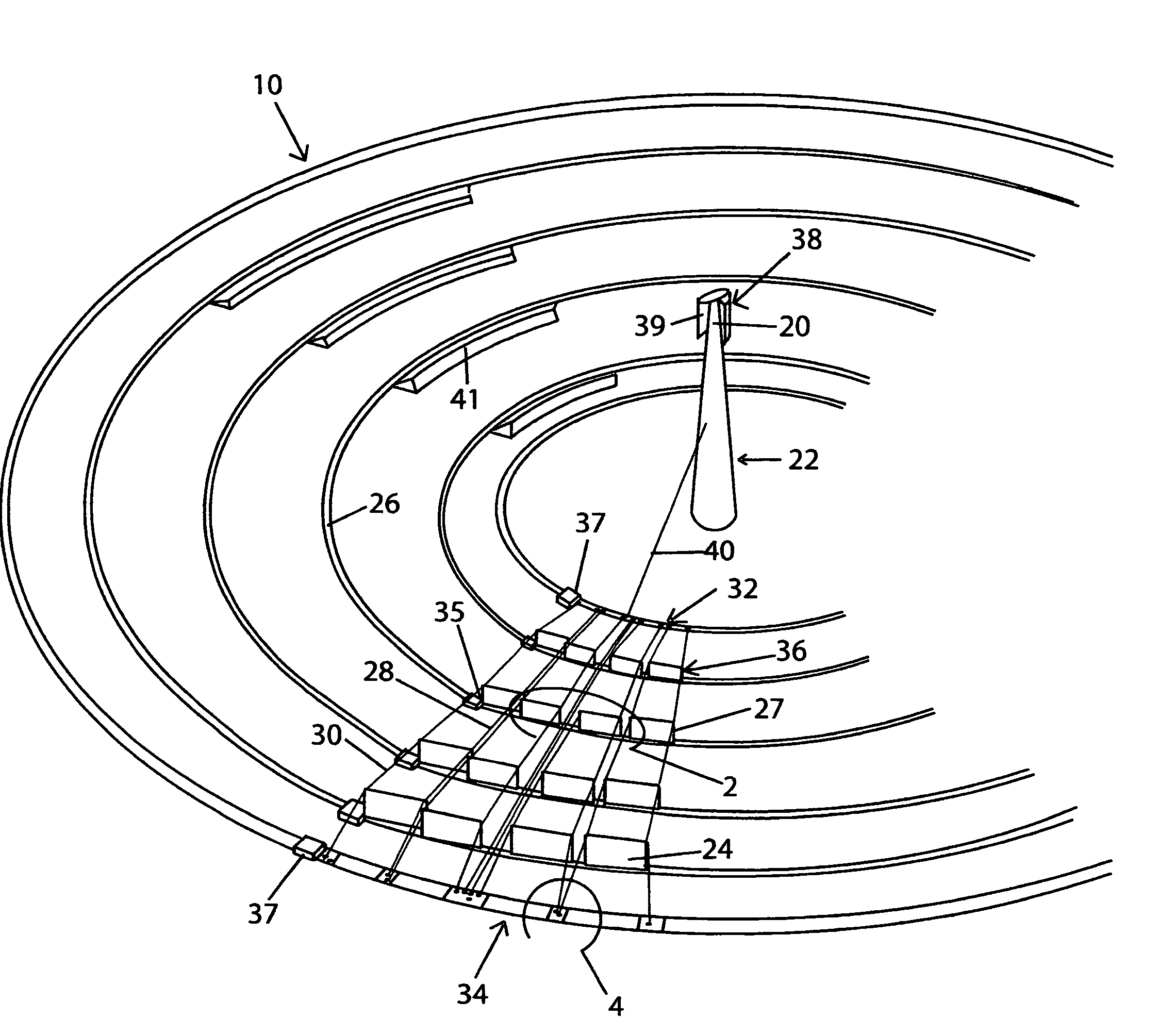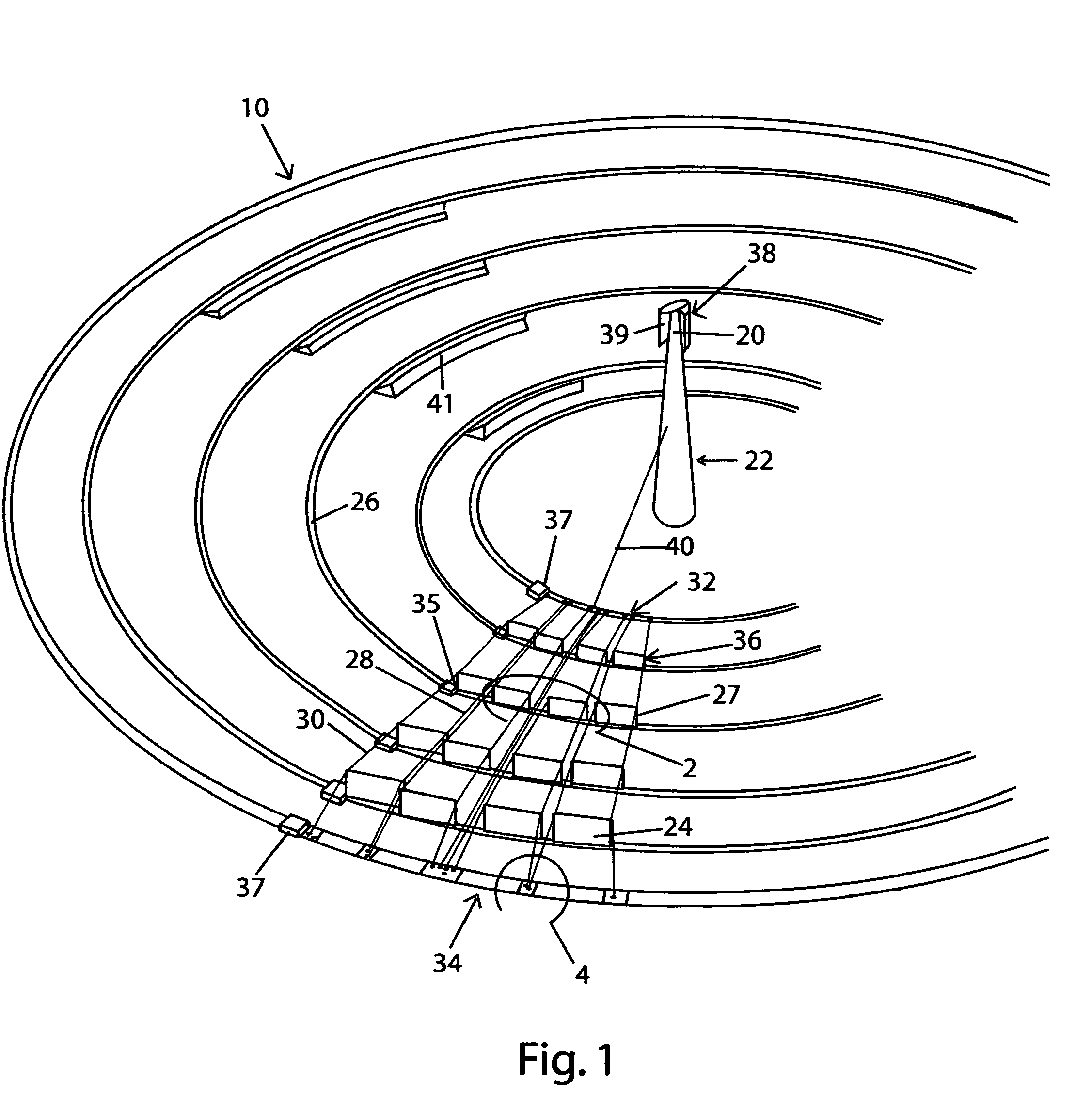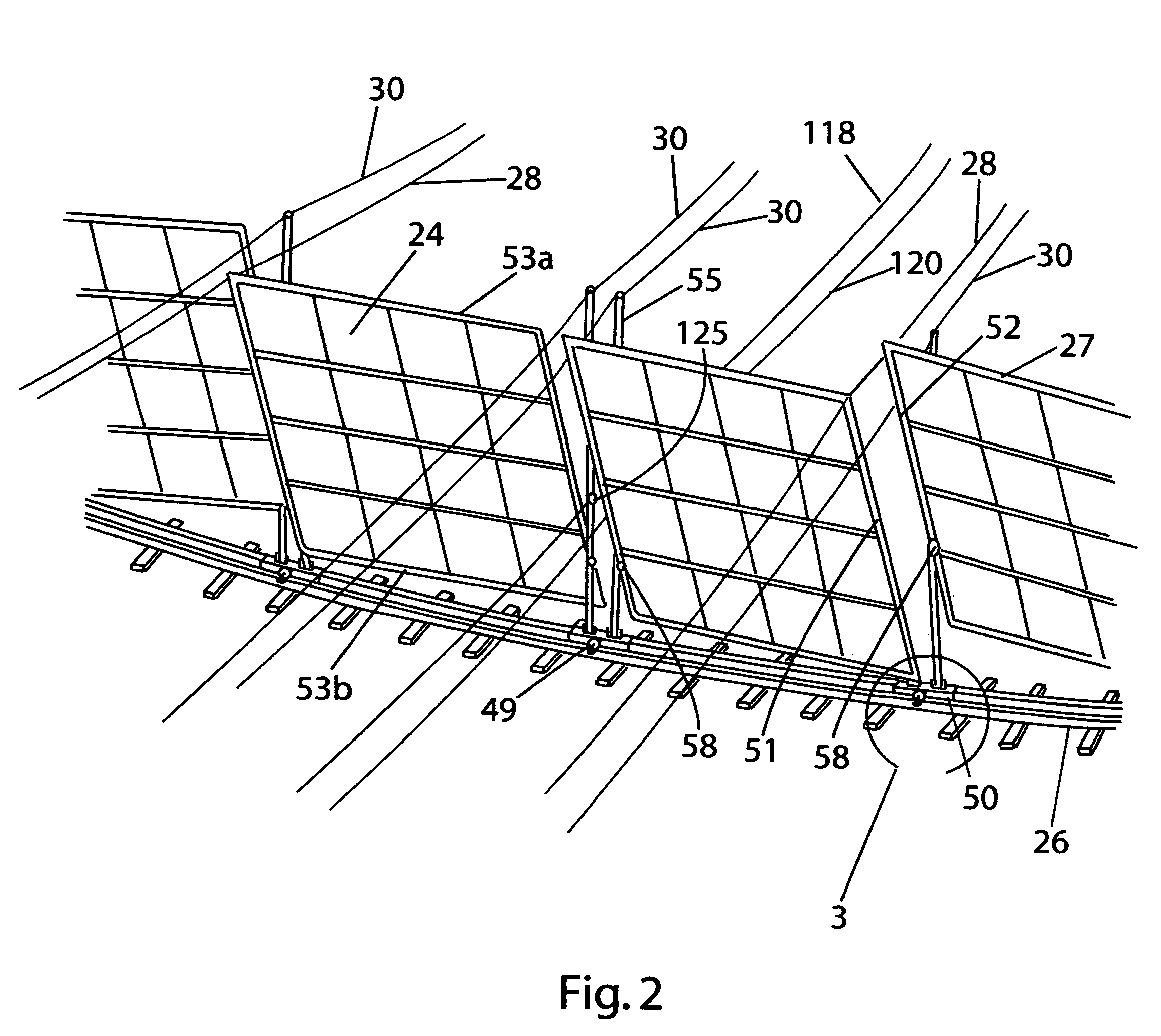Solar energy concentrator for power plants
a technology of solar energy and power plants, applied in the field of concentrators, can solve the problems of inherently expensive and inefficient mirrors mounted on pedestals, proved to be much too expensive and inefficient for widespread commercial use, and the effect of high cost and poor performance of plants
- Summary
- Abstract
- Description
- Claims
- Application Information
AI Technical Summary
Benefits of technology
Problems solved by technology
Method used
Image
Examples
Embodiment Construction
[0016]FIG. 1 is an overall view of the solar concentrator 10. The concentrator includes a central receiver 20 on a tower 22 and mirrors 24 (shown from behind) that move around the tower 22 on concentric circular tracks 26. The mirrors are braced by radially extending cables 28, 30. The cables are anchored to an innermost anchorage train 32 and an outermost anchorage train 34. Mirror locomotives 35 pull the mirror-frame trains 36 and anchorage locomotives 37 pull the anchorage trains 32, 34 around the tower synchronized with azimuthal change of the sun's position. The receiver 20 has a rotating hood 38 with secondary mirrors 39 on the inside of the hood 38. An umbilical connection 40 delivers electricity and computer commands from the tower 22 to operate motors on the trains. Low walls 41 beside the tracks extend the full length of the mirror-frame trains 36 on their respective tracks 26.
[0017]FIG. 2 is an enlarged close-up view of a portion of a mirror-frame train 36 shown in FIG. 1...
PUM
 Login to View More
Login to View More Abstract
Description
Claims
Application Information
 Login to View More
Login to View More - R&D
- Intellectual Property
- Life Sciences
- Materials
- Tech Scout
- Unparalleled Data Quality
- Higher Quality Content
- 60% Fewer Hallucinations
Browse by: Latest US Patents, China's latest patents, Technical Efficacy Thesaurus, Application Domain, Technology Topic, Popular Technical Reports.
© 2025 PatSnap. All rights reserved.Legal|Privacy policy|Modern Slavery Act Transparency Statement|Sitemap|About US| Contact US: help@patsnap.com



